visit the townland today it is understandable as to why it became an early settlement. It is both fertile, defendable and has a panoramic view of south Innishowen and Lough Foyle. It is an ancient site and one that has played a role in shaping local and international history. A castle was built here in the 14th century and occupied by the O’Doherty family. It was one of four castles belonging to the family and served to protect the approach to Inishowen. The O’Doherty family were the Gaelic rulers of Inishowen and in 1600 the castle was ‘sacked’ by the English. It was then reoccupied by the O’Doherty’s in 1608 and lost once again to the English in the 1630’s. By 1665 it had fallen into disrepair and the stone may even have been used in the build of local houses. One of the towers is still in existence today, however it is in a much reduced state.
The original castle consisted of a square keep with two semi-circular towers on the outer walls. The remains of the castle can be seen in this picture. Perhaps it was the time of day that this picture was taken or perhaps it was the late December weak sunshine, but to me it looks a dark and brooding place. However it would have been a daily sight for my Laird forefathers and an ideal place for fertile young minds to re-enact the battles of yore. It is also said by local residents to be haunted by the souls of Spanish sailors from the ill fated Spanish Armada, who were first rescued for ransom and then slaughtered by the O’Doherty’s in the field below the castle. The land in the centre of this picture is where the ‘common troops’ of King James were buried, following their death at Elagh. It is interesting to note that officers of rank who were killed here were taken to Dublin to be buried.
As the calendar of the Elagh Lairds progresses, a significant event occurs in 1617 that would affect subsequent generations of their descendants. This event was the formation of the Foyle College Grammar School. I attended this school, along with several of my siblings and other Elagh Laird descendants. The school was established by the Scottish Planters, who desired an education for their sons. One of its most notable alumni was John Laird Mair Lawrence (1stBaron Lawrence 1811 to 1879), whose statue fronts the current school. Lawrence was the Viceroy of India from 1864 to 1869 and although born in Yorkshire, his family were Irish Protestants and his mother was connected to the Knox family from Prehen Londonderry. At the time of writing it is not known where the John Laird in his name originates from, but Lawrence’s father was a Colonel in the British Army and the Barony was only created in 1869. So perhaps there is some Laird connection to be yet uncovered. John Laird is a common name within the Elagh Lairds and dates from circa 1770.
Elagh was then to play a role in the siege of Derry in 1689. We often think of the siege as being totally centred on the city, which was besieged by King James’ II army. However this was not the case and there were several battles outside the walls with the defenders taking the fight to the invading troops. They were often led by Adam Murray, a farmer’s son from Ling, Claudy near Londonderry city. Murray had little or no previous military experience, but led the Williamite cavalry in several battles with King James’ II forces. Murray remained undefeated and at one stage was offered the governorship of the city. However Murray put aside any personal vanity to remain with his unit, believing that he could make a better field commander than a politician. Recognising his ability, Murray was then offered a position of rank with King James’ II forces and a payment of £1000. He remained loyal to the Williamite’s and refused to switch sides, believing in the justice of his cause. At one stage James’ II troops threatened to take Murray’s father hostage and use him as a bargaining tool. Murray’s father still resided at Ling, but this did not meet the approval of King James II and Murray was free to take the fight to the besieging troops. One of these battles occurred on the 23rdApril 1689 at Elagh, Londonderry.
The besieging James’ II army had a large detachment of troops stationed at Pennyburn and a set of trenches at Elagh. These were of significance due to the strategic position of Elagh as a barrier to the Williamite detachment on the Island of Inch. The Inch garrison was reinforced and had provisions provided via Lough Swilly, which was not under James control. It did not suffer the deprivations of the city garrison; however it was unable to relieve or provide provisions to the city. Inch and indeed Burt were not as we know them today and were a tidal area that was easily defended.
As Murray’s cavalry attacked the trenches the defending James’ II infantry fled and were hotly pursued. However they were rallied by the appearance of their own cavalry, turned on Murray’s troops and forced them to take up defensive positions in the Elagh trenches. Not to be outdone Murray rallied his troops at the trenches and the battle continued for the rest of the day, resulting in a victory for Murray and his Williamite forces. Murray’s losses were light, but the commanding officer of King James’ II army, General Pusignan, died from wounds received at the battle of Elagh. He is thought to have died not so much of his injuries, but more so due to the ineptitude of the Irish surgeons who treated him. It is thought that had the surgeons been French he may have survived; nonetheless to lose your commander was a major blow to King James’ II Jacobite army and a major moral boost for the Williamites.
Another senior Jacobite captain was killed and a senior French commander, the Marquis De Pontis, was seriously wounded. De Pontis was sent to Ireland as an observer by Louis X1V to ascertain whether or not the French should support James’ II cause. However based on these events it is unlikely that the report of James’ efforts would have been favourable; having been defeated by a local farmer and losing their commanding officer.
So perhaps the battle at Elagh had a more significant role in European history than we know. The battle of Elagh is celebrated in the following edited 18th century verse:
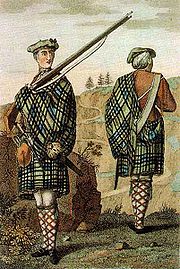 “Near Elaqh in the parks Murray came on
The Irish army, led by Hamilton,
Where he continued fighting till ’twas noon.
When we were flanked by the enemy’s dragoon.
To beat off which, he chose five hundred men.
With captains Taylor, Moore and Saunderson.
Murray himself did the brave troops command,
Who bravely did the foes’ dragoons with stand.
Great Pusignan came boldly up to fight,
But Murray quickly put him to the flight.
Brave Major Bull did wonders in that fight,
For he beat back the enemy on the right.
“Near Elaqh in the parks Murray came on
The Irish army, led by Hamilton,
Where he continued fighting till ’twas noon.
When we were flanked by the enemy’s dragoon.
To beat off which, he chose five hundred men.
With captains Taylor, Moore and Saunderson.
Murray himself did the brave troops command,
Who bravely did the foes’ dragoons with stand.
Great Pusignan came boldly up to fight,
But Murray quickly put him to the flight.
Brave Major Bull did wonders in that fight,
For he beat back the enemy on the right.
What does this mean for the Elagh Lairds? Were they there in 1688 and if they were, where would they have been?
The earliest known record of the Laird name in this vicinity lies in the Burt Presbyterian Church Kirk Session records from 1670 to1715. Burt is approximately 1 to 5 miles from Elagh and here we find recorded the following Laird entries:
- 1681 – 26th February Joanne, daughter of Richard Laird – Christening
- 1691 – 4th February Agnes Laird marries Archibald Thompson
- 1693 – 8th June Macken Campbell marries Mary Laird
- 1700 – 28th August James Henderson marries Joanne laird
- 1708 – 3rd March Samuel Laird marries Anna Hamilton
- 1711 – 5th June John Stewart marries Jean Laird
Are these the ancestors of the Elagh Lairds? No addresses are listed for any of these Lairds. However Elagh is mentioned for some other family names.
The presence of both a Richard and Samuel Laird is very significant as these are names which occur in the future of both the Bogstown and the Elagh Lairds and continue in the family today. Samuel is a name in almost every known generation of the Elagh Lairds, including myself.
Other known Samuels are:
- My Great-Grandfather’s brother, Samuel, born in 1815, who went to Philadelphia
- My Grandfather’s brother Samuel, born 1854 who was in the Royal Irish Constabulary
- My father’s brother Samuel, born in 1913
- Finally my self as Alan Samuel Laird born 1956.
I feel that in the absence of a paper trail it is safe to assume that these ‘Burt Lairds’ are the ancestors of both the Bogstown and Elagh Lairds, whose relationship was proved by recent DNA results.The Elagh and Bogstown Lairds attended Burt Presbyterian Church until the 1840’s when both families simultaneously left and attended the newly opened Ballyarnett Presbyterian Church. It was a joint decision between two closely related families. They have a common male ancestor within 8 generations and that relationship is still acknowledged today.
Other names of interest in the Burt Kirk records (related to both the Bogstown and Elagh Lairds) include the following surnames:
- Bogges, Boggs, Bogs
- Bredin, Braden, Braidin, Braiden, Braidon
- Burnside
- Campbell
- Coningham, Conuyngham, Cunningham
- Donnell
- Gibson
- Millar, Miller
- Moore
- Neally, Neilly
- Porter, Portter
- Walker
- Wallace
- Wylie, Wyllie
What was the role if any of the Elagh Laird family during the Siege of Derry?
In the absence of records, we can only speculate using knowledge of the period. We assume that our Laird families are part of the Laggan settlement, based on their faith and location within the bounds of the Laggan Plantation. The ‘Lagganers’ in this vicinity were mostly from Aryshire, having been ‘planted’ circa 1630 during the reign of James I. Therefore it is reasonable to assume that they were in the Elagh area and most likely those members as recorded in the Burt Kirk records.
Did they participate in the defence of the city? There are no military records containing their names; however there is a strong military tradition within the family and a seemingly good knowledge of horsemanship gained from a military background in the 1800’s. The existing records of the siege of Derry were written by members of the established faith and consequently the role of Presbyterians is not recorded, although it is known that they played a significant role in the defence of the city. It is only speculation, but knowing their Scottish origins and their subsequent military backgrounds, it is likely that some of them participated to some extent in the Williamite forces.
We do know that not all of the Protestant faith went into the city and that a large majority remained on their farmlands in an uneasy peace with King James’ II forces. However towards the end of the siege, James’ troops commenced a ‘Scorched Earth’ policy and laid waste to farms and stores once they believed their cause to be lost. Consequently a lot of these vulnerable persons sought refuge on Inch Island, as the city was full and still under siege. At one stage, along with the Williamite garrison, there were 10,000 persons on the island.
We assume that they returned to Elagh when the siege was lifted. It is believed that the Burt Kirk records ceased to be kept after 1715, as the majority of the congregation left in the first wave of the Ulster Scots ‘new world’ emmigration. It is thought that some of the Elagh Lairds may have been part of this event and there is even some genealogical connection to early Pennsylvanian Lairds of this period.
I am satisfied that Lairds remained at Elagh as we find the record of John Laird, the Land Steward, in Griffiths Valuation of 1854. We find him recorded as living with his mother Anne Laird and her father David Walker. The landlord is an Anne Thompson who resides beside them. They live at No. 3 Elaghmore in a house with offices attached and I assume that this is where John Laird worked. The neighbours include the Murray’s, Bell’s, Wallace’s, Dunlop’s, Lynsey’s and Porter’s. We can see them and their neighbours listed in the table below and the exact location is as per the attached map, with the Lairds living at 3a, b, c and d. John Laird was married to Mary Campbell in 1848 and they had 6 children, one of whom was my grandfather David Laird.
This begins the era of exit from Elagh by some of the Lairds, who would seek a new life in the land of opportunity – the United States of America. We have valuable records in the form of the Elagh letters which were written home from Philadelphia and over the next period I propose to take each letter in turn, analyse its contents and update on any progress made in the search for their descendants.
The picture below is of the Laird family at Gortmore, Londonderry, circa 1933. In the centre is David Laird my grandfather, who was born and lived at Elagh. David’s father is John Laird, the Land Steward. David Laird was born in 1864 and died in 1952 at the age of 88. The picture includes his wife Sarah Jane Miller and their 13 children .Included in the picture is my father George Dinsmore Laird.
George Dinsmore Laird married my mother Martha Doreen Black from Sherrifs Mountain Londonderry. Her mother was a Burnside, whose family are traceable in the Parish of Templemore from the early1600’s. My parents had 7 children, of which I am the youngest.
The search for information is ongoing; however I now know that my forefathers are almost entirely Ulster Scot in their origins. With Black, Campbell, Walker, Burnside, Platt, Miller, Wallace, Hunter and Laird, I now have no doubt as to the origin and group of people to whom I belong. They have forged my genetic makeup and libertarian ideals. I am proud to be ‘one of them’ and thank them for their industry, vision and adherence to their Scottish principles. Before I started this research I was unaware of the world wide ‘cast’ of the Elagh Lairds. I now know their descendants and my relatives are to be found in Canada, South Africa, New Zealand, Australia and the United States of America and wish them all well.
by Alan Samuel Laird. January 2011
If anyone has any information which they feel may be of assistance please contact Alan via this website.






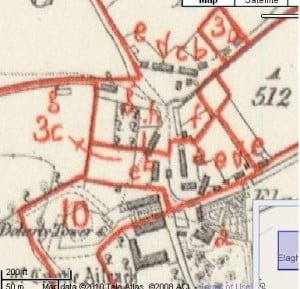



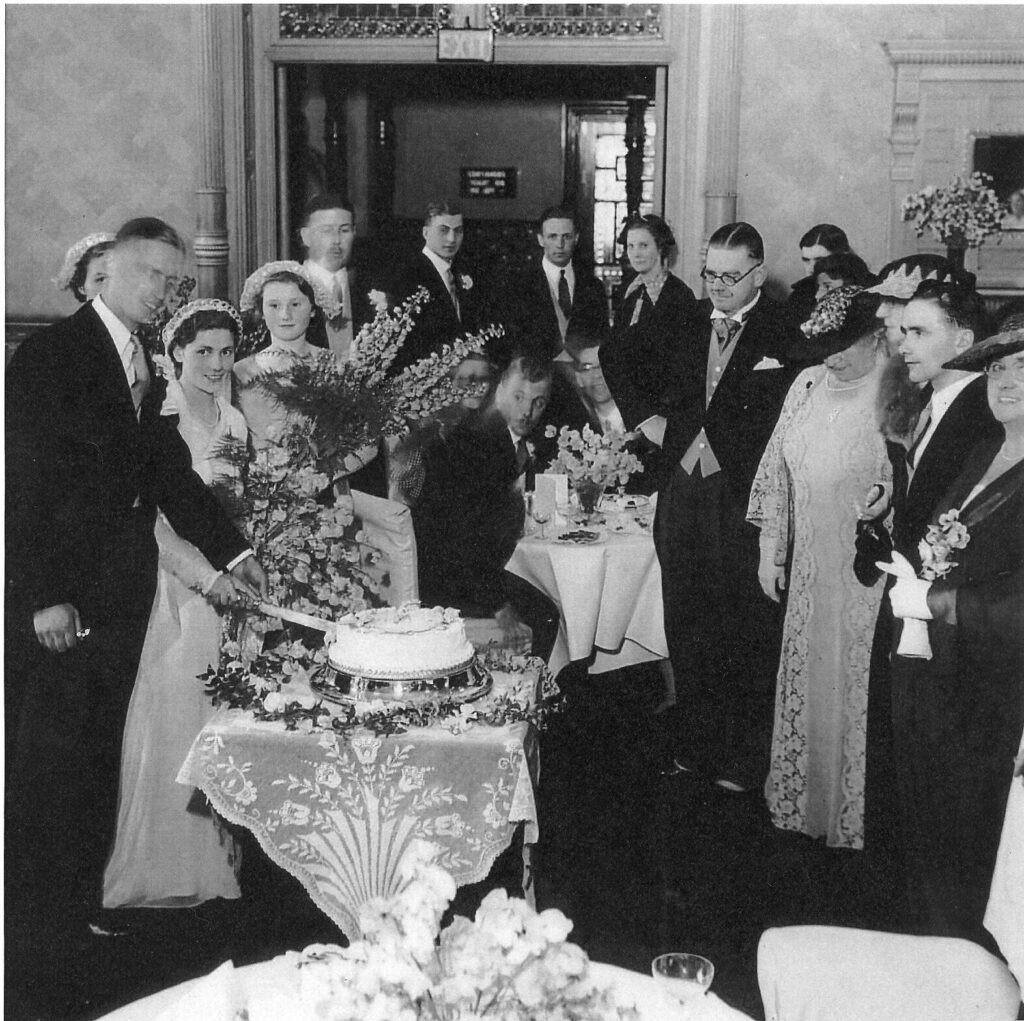
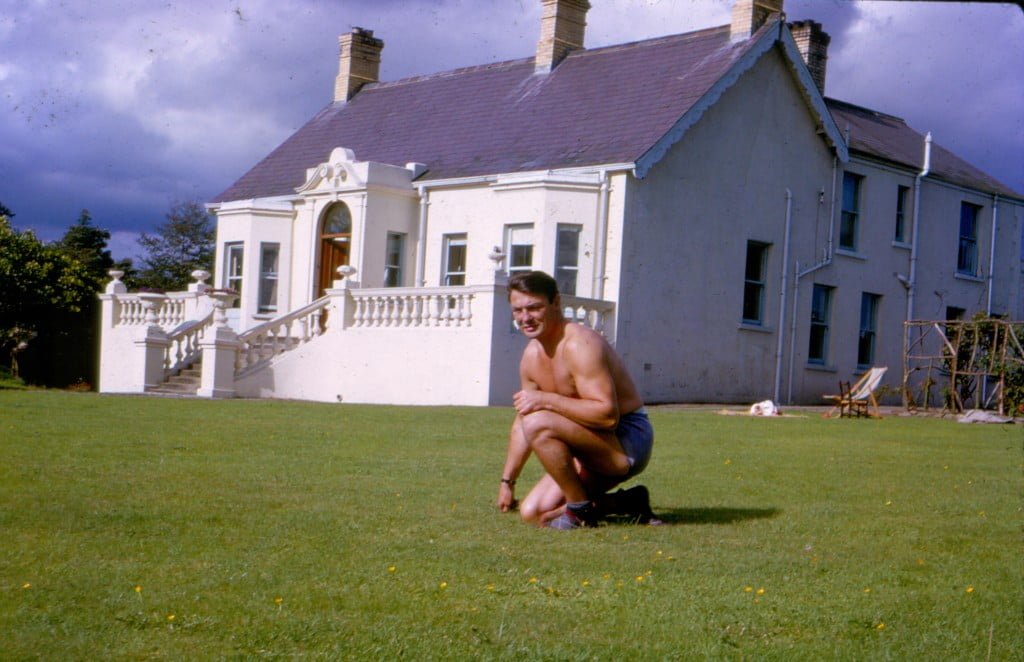


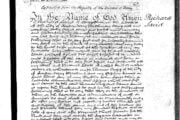

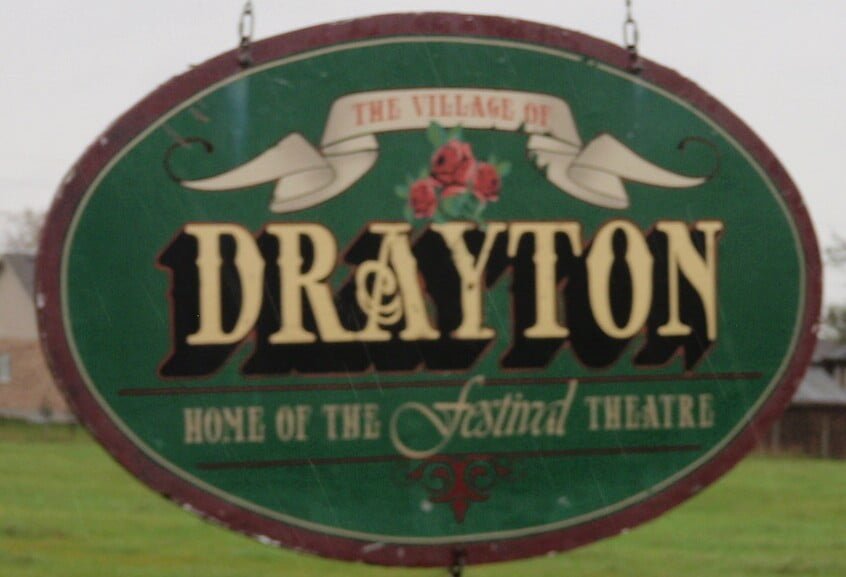

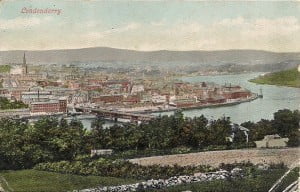
13 Comments
Lynne Bredin
Hi Alan, I was wondering if you had any information on the Bredin families in that area, and how they are connected with your family or Elagh.I remember reading something once about one of the Miss Bredins from Elagh marrying a Montgomery i think, but dont know if they are related to us.My father has completed a family tree – he is descended from a Jane Bredin from Ballymagroarty who married Ezekiel Bredin from Drumcorn on the Trench Road,Londonderry. My mothers Grandmother was Martha Bredin who married Robert Crockett.The Crockett family still living at Coshquin.Word of mouth has it that my mother’s Bredins and my fathers Bredins are connected but we have been unable to find the link. Any information would be greatly appreciated. Thank you. Lynne Bredin
admin
Lynne, thanks I have some info I will forward, does anyone in your family believe they have a Bredin connection in Australia?
Mary Wilson
Do you know anything about the Doherty Family living in area from about 1790 – 1860. There was a Michael Doherty who married a Jane Neilan?? I believe they lived in the Coleraine area but the name 'Elagh' was used by my family after they moved to Australia in 1854.
regards
Mary Wilson
lee gleason
Results from my DNA show the Gleason name back to William Silas Gleason Sr b 4 May 1823 in Butler Co, oh
buried in LaDora Iowa. The DNA then changes to the name Laird. We don't have William's father's name. We have
a first name of Cynthia or Syntha for his mother. We're looking for that Laird connection. Lee and Cary Gleason
Susan Lawson
Hi Alan, this is all fascinating. I lived in Elagh House (just south of house 2, off your map) as a child (1970-90). I am pretty sure Elagh House is about 250 years old so would have overlapped with this time (large farmhouse). We used to play and explore in and around O'Docherty's Castle. I had never heard about Spanish Ghosts though, or the Battle of Elagh. Till now!
Susan Gingras
My great-grandfather Henry Miller Morrow was from Elagh and a Methodist – have you come across any Methodists in your research, or Morrows?
Kyle Laird
Hi Alan,
I am interested in the letters from Philadelphia you mentioned in your post. Have you gone through them–have you put information about them online?
Also, I am intersted in any information about Lairds who immigrated to the USA in the first half of the 1800s. Especially women named Anne or Anna or a variation of the name (Annes or Annas with maiden and married surnames of Laird). Also if you know of any Laird folk who ended up in North Carolina.
Any information is greatly appreciated,
Kyle Laird
Heather Laird
Hi Alan, My family is from Glasgow well most of it is but I am having lots of trouble finding the Irish side of my family we have a lot of David, Alexander, John, James, Thomas, Joseph and even older that i can find before going to either America or Canada is a Laurence I think that David and Alexander were for the most part the main names used in my branch of the tree but as i am not able to find anything back from Alexander in 1580 but did find once and not able to find again a David Laird from Ireland i am sure it was around 1320 do you have any knowledge of those names in your area in Ireland and if so where i can get some information on them as my DNA advised me i am of Irish decent not Scottish as i believed.
Martyn Kee
Hi Alan – I am fascinated by the photo at Gortmore Farm c 1933. My father, Wallace Kee, was born at the same farm in 1918. I am uncertain but I suspect the farm passed from the Kee family to the Laird family between 1922 and 1933 or thereabouts. My father’s mother was Annie Isabella Miller and her father James had a daughter Sarah Jane, born in 1876, who is the Sarah Jane in the photo that married David Laird.
I am wondering if you would be kind enough to let me know the names of all the children of David and Sarah Jane. I have only 12 – James Miller Laird, Mary Campbell Laird, Annie Hunter Laird, Jemima Gibson Laird (incidentally my father’s mother was names Jemima Gibson Kee), your father George Dinsmore Laird, Sarah Jane Laird, Evelyn Laird, David Walter laird, Margaret Bennett laird, Samuel Laird, Thomas Laird and finally Robert Laird.
Are the above children correct and who am I missing. I would very much appreciate any further information on any of the family as it seems from your information that many subsequently emigrated.
Best regards
Martyn Kee
Cathy Pidgeon
Hi Alan
I am interested in any connections you have with the Platt family. You mentioned them in your last paragraph. I am a descendant from the Platts of Gallagh. Henry Platt is my great (x2) grandfather
Regards
Cathy Pidgeon
wow
Cathy hi I have received your message and will ‘dig out’ my notes over the next day or so! and will reply in more detail. I have not ventured too far in tracing other family names and concentrated mostly on my Lairds but I have some details of my connections with the Platt family.
regards Alan
wow
Cathy
my great grandmother om my mother’s side was Mary Jane Platt. Her father , I believe , was too a Henry Platt. Their second son was called Henry Burnside (if you are aware of the Scottish naming of family system, the second son was named after the mother’s father.)
Henry Burnside was killed in WW1 and has the distinction of being the only person named on 2 NI war memorials ,Coleraine and also the Diamond war memorial in Derry.
Henry’s sister, my great aunt, was Annie Platt Burnside, her aunt was Annie Platt , Mary Jane’s sister and was married to Sir Samuel Orr. Does this fit in with your family?
Are you aware of who George C Platt born Derry 1842 may have been? He was awarded the Congressional Medal of Honour at Gettysburg. He was in the 6th US Cavalry as was my John Laird who was taken prisoner at Gettysburg so perhaps they may have known each other. They both lived in Philadelphia , were in the same regiment and were born in Derry. Most Ulster Scots who emigrated to the United States tended to live close to each other and attend the same churches. I apologise if you are aware of all this ! There is a bridge in Philadelphia named after George C Scott!
Alan -let me know some of your details and hopefully they are similar !
wow
Sorry Cathy George C Platt bridge not Scott!!